Coil snails in an aquarium: features, benefits and harms
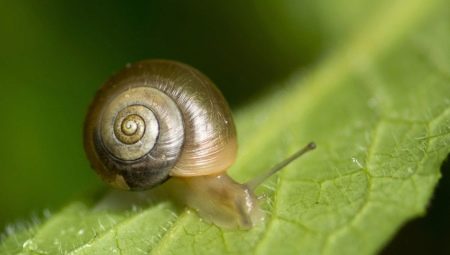
Coil snails are inhabitants of freshwater reservoirs. Some lovers of mollusks breed them on purpose, but often little creatures are uninvited guests - their caviar or tiny children end up in a new house along with purchased plants. If fish live in the aquarium, perhaps the owner should know more about the characteristics of these representatives of the gastropod class.
Features and varieties
Freshwater snails are a common species belonging to the order of lung molluscs. Since their feature is the presence of an organ similar to lungs, the underwater inhabitant is able to survive even in polluted ponds with stagnant water, with a lack of oxygen. The snail's body has a shell, which is a spiral with 4-5 turns.
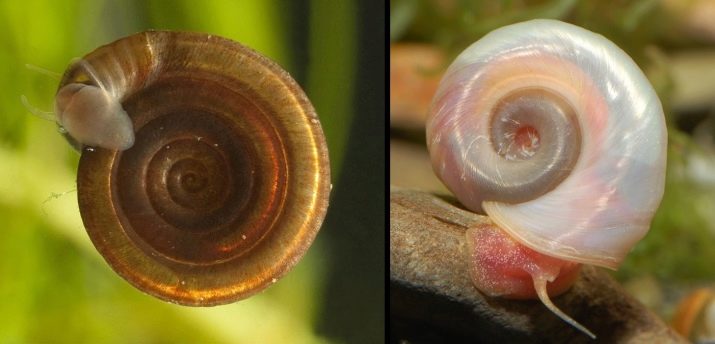
In diameter, the size of an invertebrate animal leaves no more than 3.5 cm, but these are the largest specimens, more often found in nature. In an aquarium environment, they are able to grow up to 1-2 cm. In addition, if there are many of them, then they are usually quite small. The mollusk has long horns, eyes and paired tentacles, as well as a leg with a sole, with which it moves over plants and glass surfaces. Snails live 2-4 years in the wild, and in an aquarium they can live no more than 2 years.
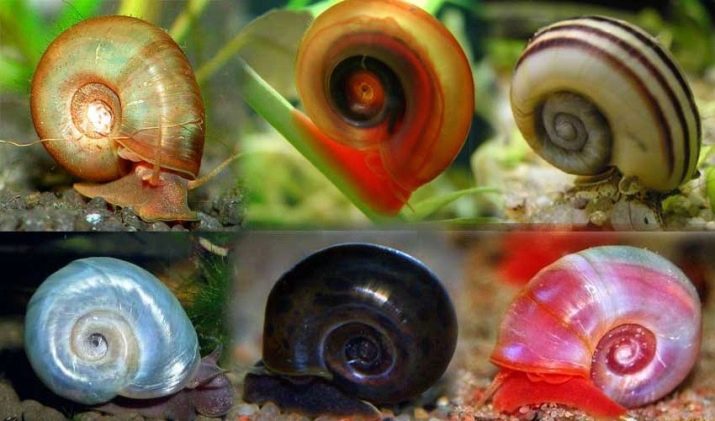
There are several types of such molluscs.
- Famous inhabitant of aquariums Is a brown horn snail that prefers stagnant bodies of water with lush vegetation. This mollusk is the largest (up to 35 mm).
- Red horn coil - the animal lives up to its name, differing in the bright red color of the shell.The species is considered decorative, in addition, it is an indispensable cleaner that puts things in order in the aquarium and feeds on the remains of plants and food.
- Keeled snail - a tiny creature combining brown and gray in its appearance, measuring 4 mm. By eating food from the sides and bottom, it also cleans the aquarium.
- Far Eastern snail is of Asian origin, its shell combines red and brown color, the food of this small unassuming mollusk (its size is not more than 1 cm) is plants.
- Coiled coil - a small snail 1 cm in size with a yellowish-brown shell. The variety is distinguished by rapid replication, it is capable of filling the water space with lightning speed, while polluting the water and soil.

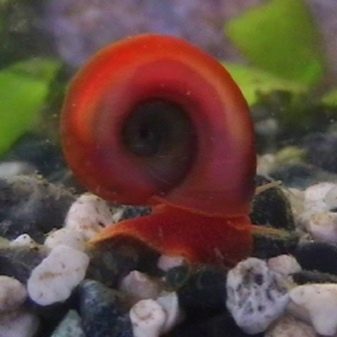
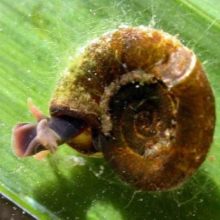
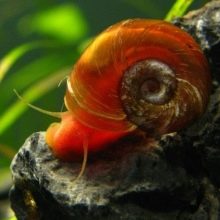
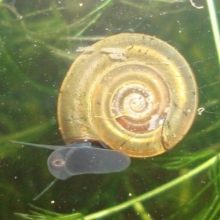
Snails are characterized by rapid reproduction, these organisms are hermaphrodites, capable of self-fertilization. They lay eggs on the reverse side of the leaves of underwater plants, thus hiding it from fish. Usually masonry is a tiny growth, extremely hard and almost invisible due to its transparency.
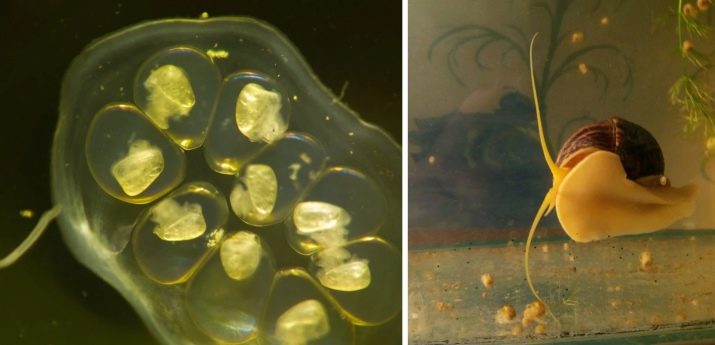
The benefits and harms of a coil snail in an aquarium
Wherever snails live, in an aquarium or their natural environment, the benefits of their presence are obvious:
- these small creatures eat the decaying parts of the leaves and stems of underwater plants, feed on the remains of fish food and excess organic matter, for example, dead fish;
- clean the walls of the aquarium, removing plaque from them, remove unwanted film from the water surface;
- at the same time, by their behavior, you can navigate when it is time to change the water - if they float, it means that it is polluted;
- when the population of molluscs is greatly increased, this is a signal that harvesting is necessary, and it is time to reduce the amount of feed;
- various aquarium fish feed on coils;
- snails, especially some of their species, can decorate the aquarium and bring its environment closer to natural, more preferable for other inhabitants.
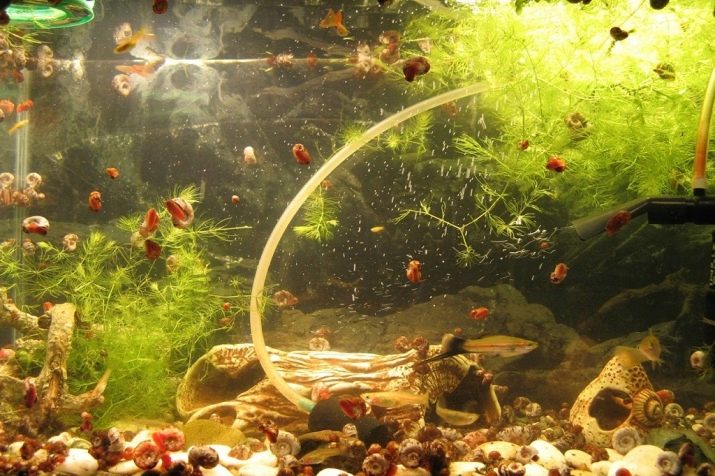
The opinion that the coils are capable of damaging healthy plants is not based on anything - they have too small and weak teeth that are not able to bite off strong healthy parts of plants and are designed only for soft rotting fragments.
Talking about snails-coils as pests is at least wrong, because in nature, each creature performs its own, specific task. However, it is worthwhile to figure out how a negative judgment about this mollusk is provoked.
- Some believe that the main harm is the uncontrolled fertility of the species, and as the population of snails grows, the aquarium quickly becomes polluted with their waste. Because of this, fish that do not have enough oxygen suffer.
- Dead shellfish emit an unpleasant odor, and, decomposing, can cause illness in fish.
- The coils are capable of carrying microorganisms that parasitize other underwater inhabitants.
I would like to note right away that half of these arguments are untenable, and it is not difficult to remove molluscs.
Overpopulation can be avoided at all, and it is even necessary to regulate the number of freshwater inhabitants.
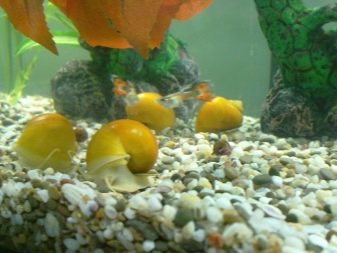
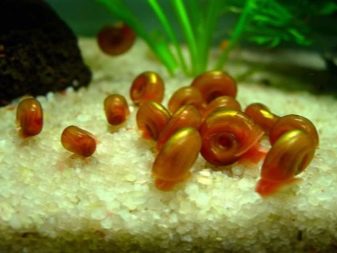
How to get rid of shellfish
To combat the reproduction of snails, you need to know the conditions under which they feel comfortable. Those who breed them are well aware of the following subtleties:
- the coils, in addition to fish food and plant rot, feed on almost any organic matter - vegetables, boiled meat, crab sticks;
- feel great with any characteristics of water, but prefer a temperature - + 22-28 degrees;
- mollusks can get out of the aquarium, so you need to close it with a lid;
- due to the fact that the body of the coil mainly consists of protein compounds, when they die, the "corpses" quickly decompose, and they must be removed immediately so as not to poison the aquatic environment.
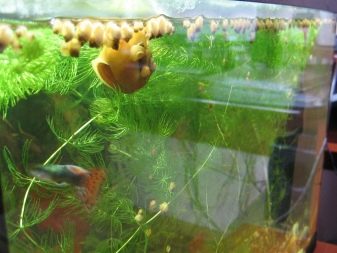
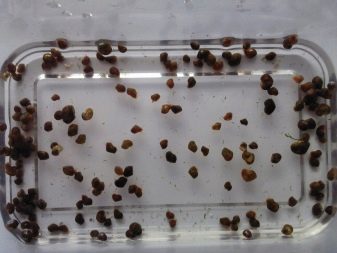
Snails begin to reproduce actively only under the most favorable conditions for them:
- when there is a lot of food, which means that the fish are not hungry;
- there are no natural enemies of molluscs in the aquarium.
Therefore, you can remove the coils without exposure to chemicals that are harmful to water and fish. For example, reduce the amount of feed. Or create new inhabitants, which include the following varieties.
- Catfish ancistrus - fish that help restore biological balance in an artificial environment. They are able to peel off the hard eggs of snails, and thus stop the birth of young individuals;
- Helena snails - unpretentious predators devouring their own kind;
- Macropods - these labyrinth fish eat molluscs and various parasites;
- South American tetraodons - also feed on snails;
- Macrobrachiums - freshwater shrimp, characterized by aggressive behavior and loving to feast on representatives of the gastropod family;
- Favorite delicacy also coils are considered for barbs, cichlids and battles.
True, this option will not work if other types of fish live in the aquarium that are incompatible with these underwater inhabitants.


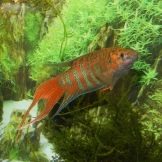
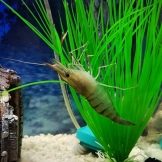
If there are not very many snails, but their presence is undesirable, you can use the bait to collect as many individuals as possible... This is done with the help of lettuce greens or a leaf of white cabbage, which are previously doused with boiling water and cooled.
A tried and tested remedy is banana peel, which is first kept in a warm place or in the sun so that it turns black and softens. The coils stick around it in bunches and it is easy to remove them from the water along with the trap. However, this method also has its drawbacks - a banana can significantly affect the composition of the water, and if there are fish in the aquarium, it is not a fact that they will feel comfortable.
The use of chemical agents to destroy a population is always associated with a certain risk of killing other living organisms in the aquatic environment, therefore, it is possible to resort to a similar method, but with caution.
Most of these preparations are made on the basis of copper sulfate, the action of which negatively affects the life of plants, some fish, shrimp and other crustaceans that live with the coils.
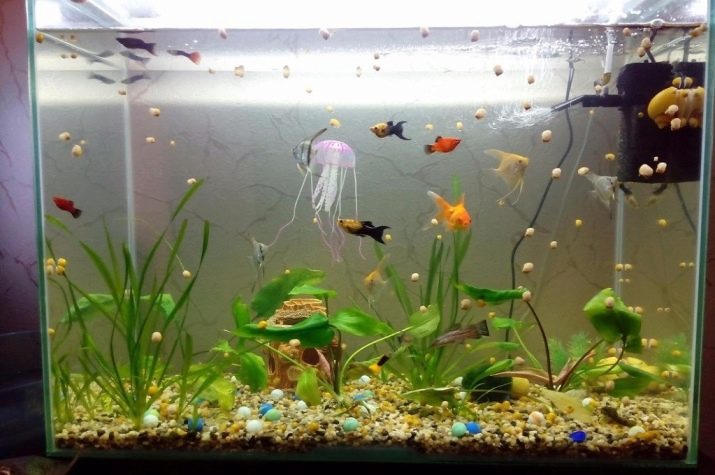
In addition, you will have to promptly remove dead mollusks, drain water, rinse plants, driftwood, stones, as well as soil and filters. It's a headache, isn't it, especially since you can completely flush an artificial reservoir, removing snails from it, without chemical compounds and fear for the life of other aquarium settlers.
No matter how you look at it, in the end it all depends on the person. By giving more time and attention to your wards, fish and snails, by properly feeding and cleaning the aquarium in time, you can avoid the need to be cruel to tiny creatures, the only fault of which is their innate ability to actively reproduce themselves.
Interesting facts about coil snails can be found in the following video.








